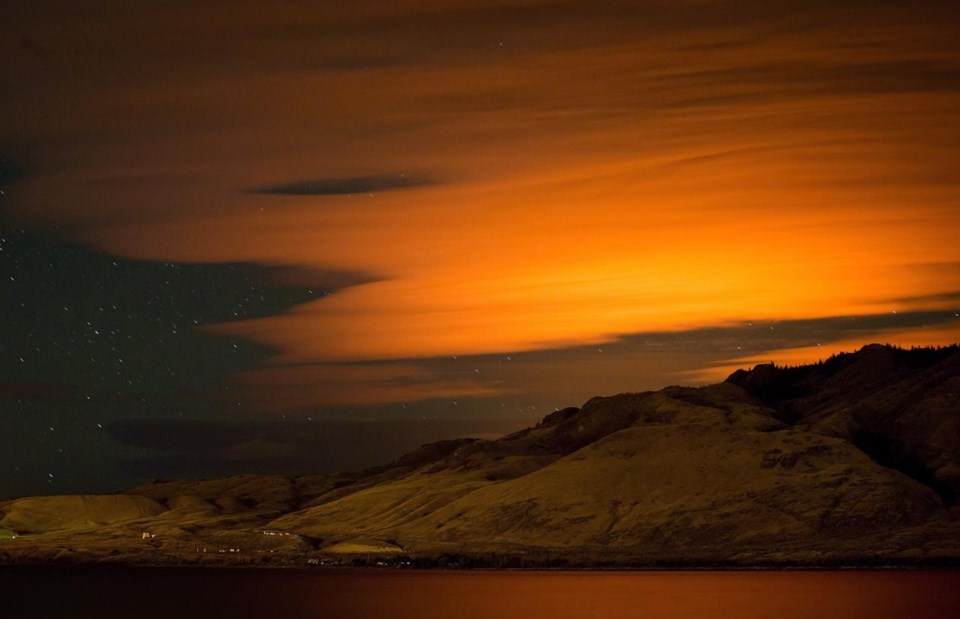VANCOUVER — An Indigenous-led report into a massive wildfire nearly six years ago that destroyed more than 100 homes and scorched a vast swath of British Columbia's Interior says the blaze resulted in up to $1 billion per year in ongoing nature and ecosystem losses.
The Elephant Hill wildfire burned more than 1,900 square kilometres of forests, grasslands and properties in the summer of 2017, directly affecting numerous First Nations and other communities.
The report was released Wednesday by the Secwepemcul’ecw Restoration and Stewardship Society, based in Kamloops, B.C. The society was founded by eight Secwepemc communities directly affected by the Elephant Hill wildfire and has been working to pursue landscape recovery and restoration throughout their territories.
Susan Todd, president of consulting firm Solstice Sustainability Works Inc., led a research team that worked with the society to prepare the report.
Todd, who's a chartered professional accountant and has a master's degree in environmental management, said people may be uncomfortable attaching a monetary value to the environment and resources, but if "we don’t count them, they are effectively valued at zero."
"We just need to make sure that we don't take nature services for granted. When something seems free, then you tend to overuse it or you tend to use it badly," she said in an interview.
The economic analysis shows how resources, including wild food, timber, regulation of clean water supply and clean air, as well culture and well-being services, were affected by the fire.
The research estimated a range that varied widely for some resources. For instance, itdetermined the lost value in regulating water and stabilizing soils to mitigate floods and landslides was between $58 million and $101 million per year.
Similarly, the lost value of culture, well-being and education services ranged from about $2.6 million to $26.7 million per year, depending on the frequency of such activities.
The costliest single item, water purification, was assigned a value of $433.5 million.
The $1-billion annual price tag was calculated using the high estimated values, while the low estimate was about $512 million.
"I like to be conservative. I never want to overstate the case and so that's why it was important to me that we put in a range," Todd said.
She reiterated that the numbers are estimates, but researchers "used well-established ecological economics approaches to valuing ecosystem services."
The analysis also estimated separate one-time losses, dominated by carbon storage loss from the burning of trees and soil valued at $1.57 billion to $1.58 billion.
The lost carbon absorption of the burned ecosystem was assigned an annual value of $15.2 million to $366.1 million.
The report says assigning dollar values have limitations, but should still be used as a "tool for ensuring that nature’s services do not get undervalued in decision-making."
Todd also noted the data was collected in 2021 and does not account for inflation since then.
The report highlights the need for greater investment in Indigenous-led restoration of fire affected areas, she said.
In December 2021, the society released another report that produced 30 calls to action to improve wildfire management and recovery practices. That report said the fire could have been better managed if the province, including the wildfire service, had worked with Indigenous communities earlier and more actively throughout the response and recovery processes.
Angie Kane, CEO of the society, said she hopes governments will also take the new report into account when conducting forest planning.
"It highlights a concern around how important our ecosystem is and how important it is to start doing things to preserve and protect it," she said in an interview.
"Our ecosystem is in a state of emergency. We just need to look at how we manage our forests, and how we move forward to mitigate the impacts of these wildfires and of climate change."
This report by The Canadian Press was first published May 10, 2023.
Brieanna Charlebois, The Canadian Press




